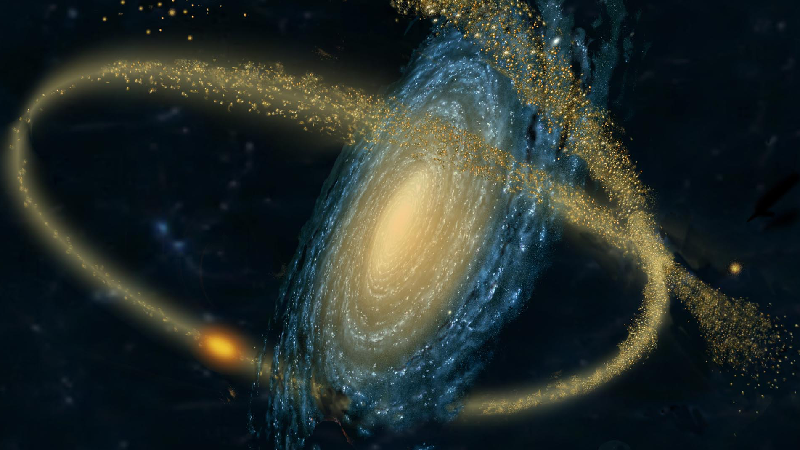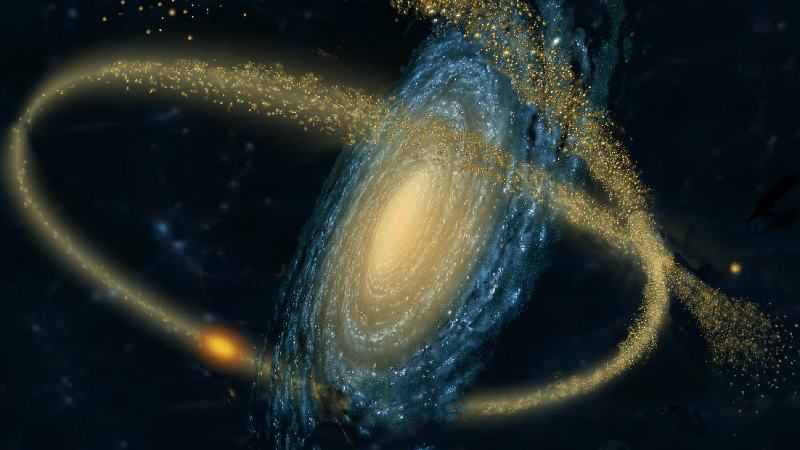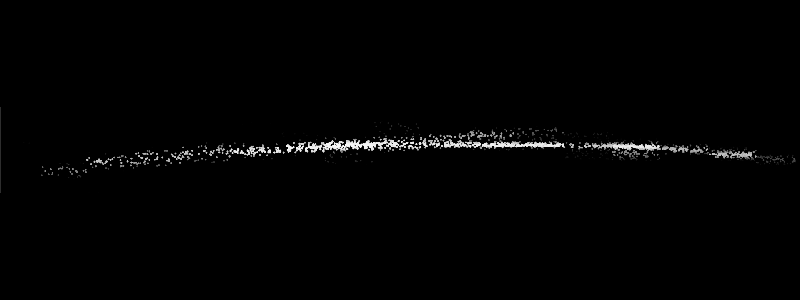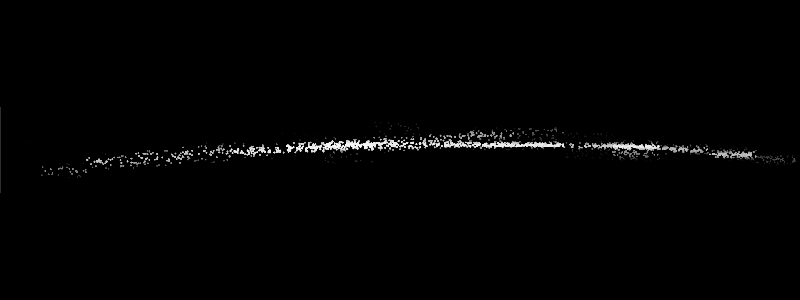Mapping Dark Matter in the Milky Way
Dark matter in our Galaxy is often depicted as a smooth and uniform cloud. But it’s actually known to be clumpy, with multiple components that move through the Milky Way at different velocities. New astronomical data is now providing the first precise measurements of these properties and may transform how cosmologists model Galactic dark matter, according to researchers speaking last month at the APS April Meeting in Denver. They showed that the data would soon allow a mapping of the locations of dark matter clumps and has already led to the identification of multiple components of the dark matter in our Sun’s neighborhood. The high-precision data come from the Gaia observatory, a spacecraft 1.5 million kilometers from Earth that has observed over a billion stars.
Our Galaxy is littered with the debris that remains from numerous star clusters and dwarf galaxies that the Milky Way ensnared over billions of years. The most recent debris is in the form of so-called stellar streams—collections of stars stretched out into arcs that extend out of the plane of the Galactic disk. The gravitational tug from a passing blob of dark matter would produce gaps and other roughness in an otherwise smooth stream, and researchers have previously attempted to learn about dark matter clumps by observing these gaps. But the stream stars are difficult to distinguish from the foreground of more numerous stars in the Milky Way disk. This lack of contrast has made it difficult to map stellar streams in great detail and with high confidence.
That all changed in April 2018, when the Gaia observatory released its second set of data and provided high-precision information on 1.3 billion stars, including their positions, velocities, and distances. Ana Bonaca of the Harvard-Smithsonian Center for Astrophysics in Cambridge, Massachusetts, used the Gaia data to select stars at a similar distance and velocity and to create (in just hours) a high-resolution map of stellar stream GD-1. "I literally could not believe this map when I first made it,” she recalls. It revealed a few gaps along with a long, thorn-like structure she calls a spur that had not been seen before. The high-resolution data allowed Bonaca and her colleagues to perform new, highly-precise simulations of dark-matter encountering the stream.
The simulations showed that the structures in GD-1 could be produced by a fairly dense object of about 107 solar masses that came within about 50 light-years of the stream in the past 500 million years. Bonaca and her colleagues looked at all of the known molecular gas clouds, globular star clusters, and dwarf galaxies that could have perturbed the stream but could not find anything having close to the correct combination of parameters. A big clump of dark matter, on the other hand, seems to be the best option. A prediction from the standard cosmological model for the typical size of a dark matter clump comes closer to the correct parameters but is still a bit off.
However, astrophysicist Mariangela Lisanti of Princeton University, who also spoke at the meeting, says that much more refinement is needed in both the dark matter theory and in the stream simulations before we can say that they are incompatible. In fact, she says, such measurements could someday serve as a much-needed test of cosmic dark matter models on sub-galactic scales.
Lisanti and her colleagues have also observed the inhomogeneity of dark matter, but in a different way. They combined the Gaia data with data from the Sloan Digital Sky Survey to identify stars in our neighborhood of the Milky Way that are outside the Galactic disk. The team distinguished two, non-disk populations of stars: old stars with an isotropic distribution of velocities, and young stars having a relatively large radial velocity. This second population appeared to come from a large galaxy that merged with the Milky Way 7 billion years ago.
Using simulations, Lisanti and her colleagues showed that dark matter associated with each of these populations would have velocity distributions essentially identical to those of the stars. So the team has identified two components of dark matter with distinct velocity distributions—the first time that an observation-based technique has nailed down any anisotropy, Lisanti says. Simulations have suggested that multiple components could exist, but lacking sufficient observational data, researchers have not known how to model them. So Lisanti says it’s time to “upgrade to version 2.0” of dark matter when simulating the Galaxy. This new picture should also lead to more realistic modeling of the local dark matter “wind,” which researchers need to interpret results from dark matter detection experiments on Earth.
Bonaca and her colleagues are now working to plot the trajectory and current location of the dark matter clump that they believe encountered the stellar stream. With further study of stellar streams, Bonaca says this type of analysis “will allow us to measure the abundance of pure clumps of dark matter” and ultimately map out their locations and size distribution.
–David Ehrenstein
David Ehrenstein is the Focus Editor for Physics.







